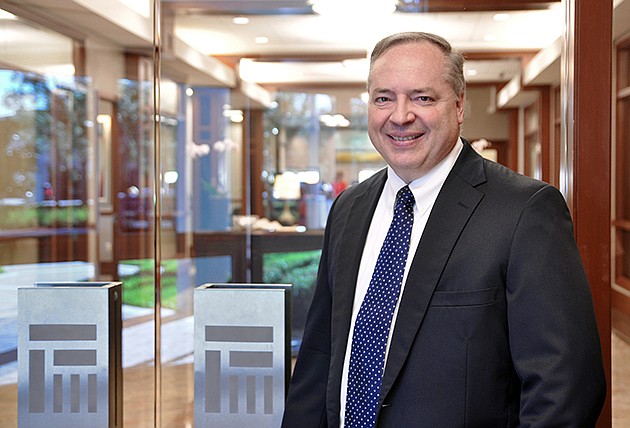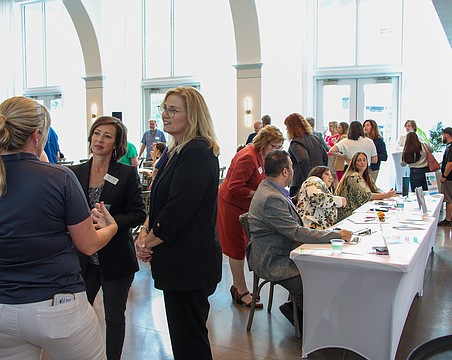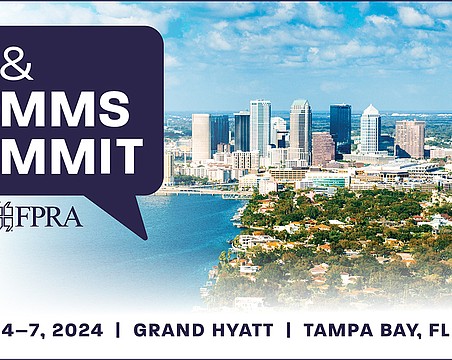Bankers on the Gulf Coast are making more money lending money.
That's good news for entrepreneurs because banks will be increasingly encouraged to lend money rather than squirrel it away in their securities portfolios.
According to the most recent data from the Federal Deposit Insurance Corp., net interest income at the 42 banks headquartered from Polk to Collier counties rose 15.6% in the first quarter ending March 31 compared with the same quarter one year ago.
Net interest income is the interest that banks earn on loans minus the interest they pay to depositors. This is an important gauge of the health of financial institutions because banks make money on the difference between what they charge for loans and what they pay depositors.
Brian Eagleston, the chief financial officer of FineMark National Bank & Trust in Fort Myers, says strong loan growth combined with the low cost of deposits boosted his bank's net interest income 36% in the first quarter compared with the same quarter in 2014. That's the most rapid growth of any bank headquartered on the Gulf Coast, according to FDIC data (see chart on page 11).
Eagleston says every hundredth of one percentage point drop (one basis point, in financial lingo) in deposit expense contributes $80,000 in net interest income to the bank. “That's a lot if you think about it that way,” says Eagleston. “Our margins have gone up 20 basis points.”
Eagleston says the bank keeps interest costs low by borrowing from the Federal Home Loan Bank of Atlanta at favorable rates. “I can't say enough good things about it,” Eagleston says.
Meanwhile, net loans at FineMark grew 35% to $663 million in the first quarter compared with the first quarter one year ago. Lending to entrepreneurs, homeowners and businesses doubles the interest yield the bank can earn compared with parking the money in a conservative bond portfolio, Eagleston says.
In addition, many of FineMark's loans have variable terms that will adjust upwards if interest rates rise. “Rates go up? No big deal,” Eagleston says.
At Jefferson Bank of Florida in Oldsmar, interest expense declined even as income rose, boosting net interest income nearly 20%. “It was a great quarter,” says Robert McGivney, Jefferson's chairman and CEO.
McGivney attributes some of the interest expense drop to the fact that Jefferson increased non-interest-paying deposits. “When that goes up we don't have interest costs, we just have the overhead to support them,” he says.
Still, McGivney says Jefferson is prepared for the possibility of interest rates rising, including limiting the amount of fixed-rate loans on its books. “Our assets re-price more quickly than our liabilities,” he says. (In the accounting world for banks, loans are classified as assets and deposits are classified as liabilities.)
“That's our job to stay profitable in the ups and downs,” McGivney says of interest-rate volatility. “Fortunately, it's not rocket science.”
Of course, banking is highly competitive. In addition to the 42 banks headquartered on the Gulf Coast, there are many regional and national banks vying for business, too. “Pricing assets while remaining competitive can be a challenge in a low-rate environment,” says Cathy Swanson, the CEO of Freedom Bank of America in St. Petersburg, in an email response to questions.
Freedom Bank posted the third-highest increase in net interest income in the first quarter with 28%. “At Freedom Bank we best manage that process by building long-term, lasting relationships rather than pricing transactions,” Swanson says in an email.
“One of the things that banks are battling are margins,” says Dale Dreyer, regional president with CenterState Bank of Florida in Winter Haven. He says the bank has benefited from the fact that interest-paying certificates of deposits are not a significant part of its deposits. “That mix of your deposits really drives your costs,” Dreyer says.
Strong loan growth helped CenterState grow net interest income 33% in the first quarter compared with the same quarter one year ago, the second-highest on the Gulf Coast after FineMark. “We had our best quarter ever in loan originations,” says Dreyer.
To be sure, if rates rise faster than expected, bank margins could be squeezed. “Interest rate risk is a huge potential risk for the whole banking industry,” says Neil McCurry Jr., president and CEO of Sabal Palm Bank. “Every bank should be reviewing their balance sheet.”
Tight margins help explain why many banks are growing businesses that generate non-interest income. “The greatest way to improve income is to be producing those saleable loans,” says John Thompson, the president and chief operating officer of Central Bank in Tampa.
For example, Central Bank started a residential lending operation in early 2014 and the fees it generates from selling those mortgages are generating non-interest income. “We've been trying to ramp that up,” Thompson says.
Still, Central Bank's net interest income grew 27% in the first quarter compared with the same quarter one year ago from the loans it's generating and holding on its books. It's a welcome change from a few years ago, Thompson says. “There was a period of time when you couldn't look out in the future,” he says. “Now you can look out 12 months.”








